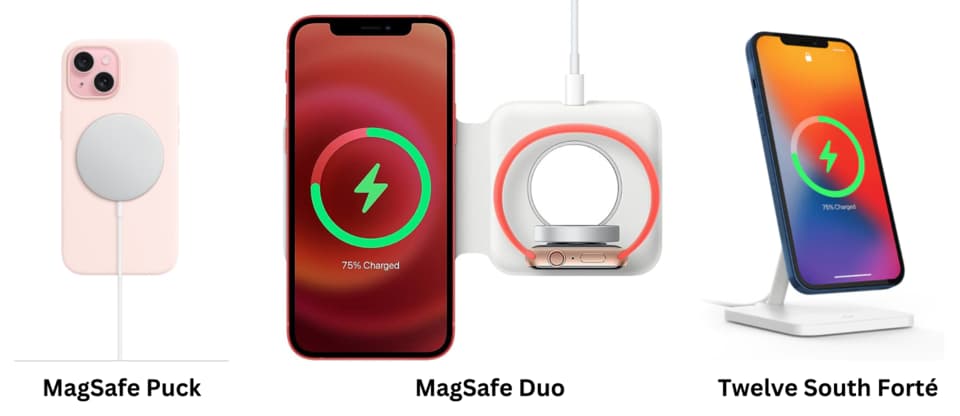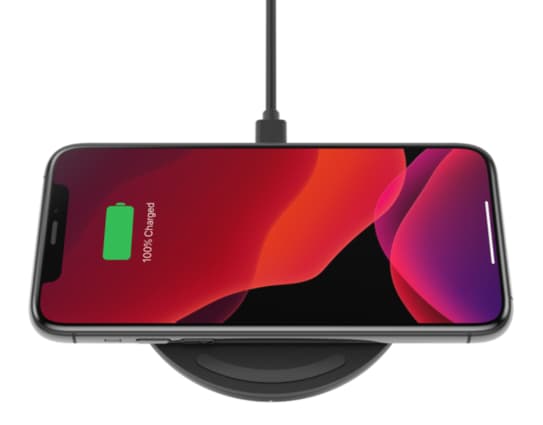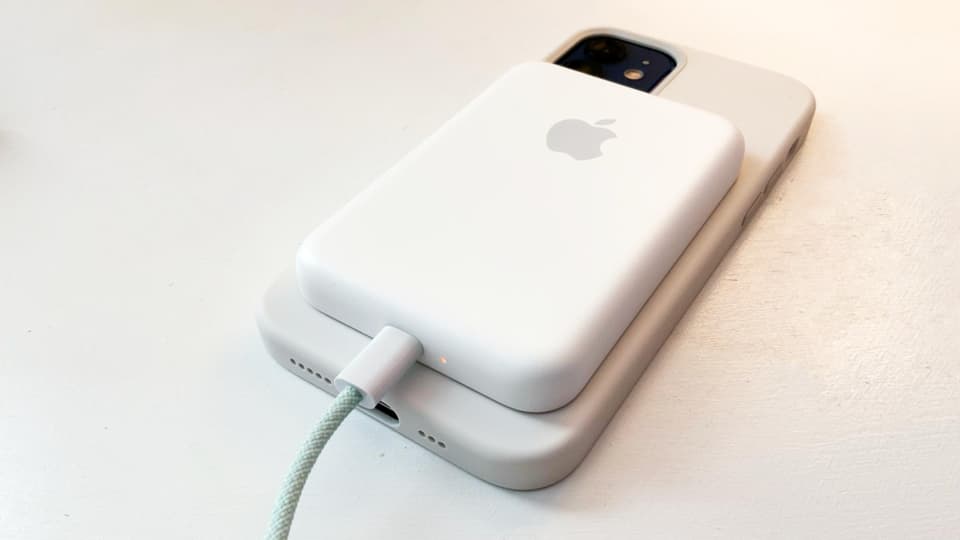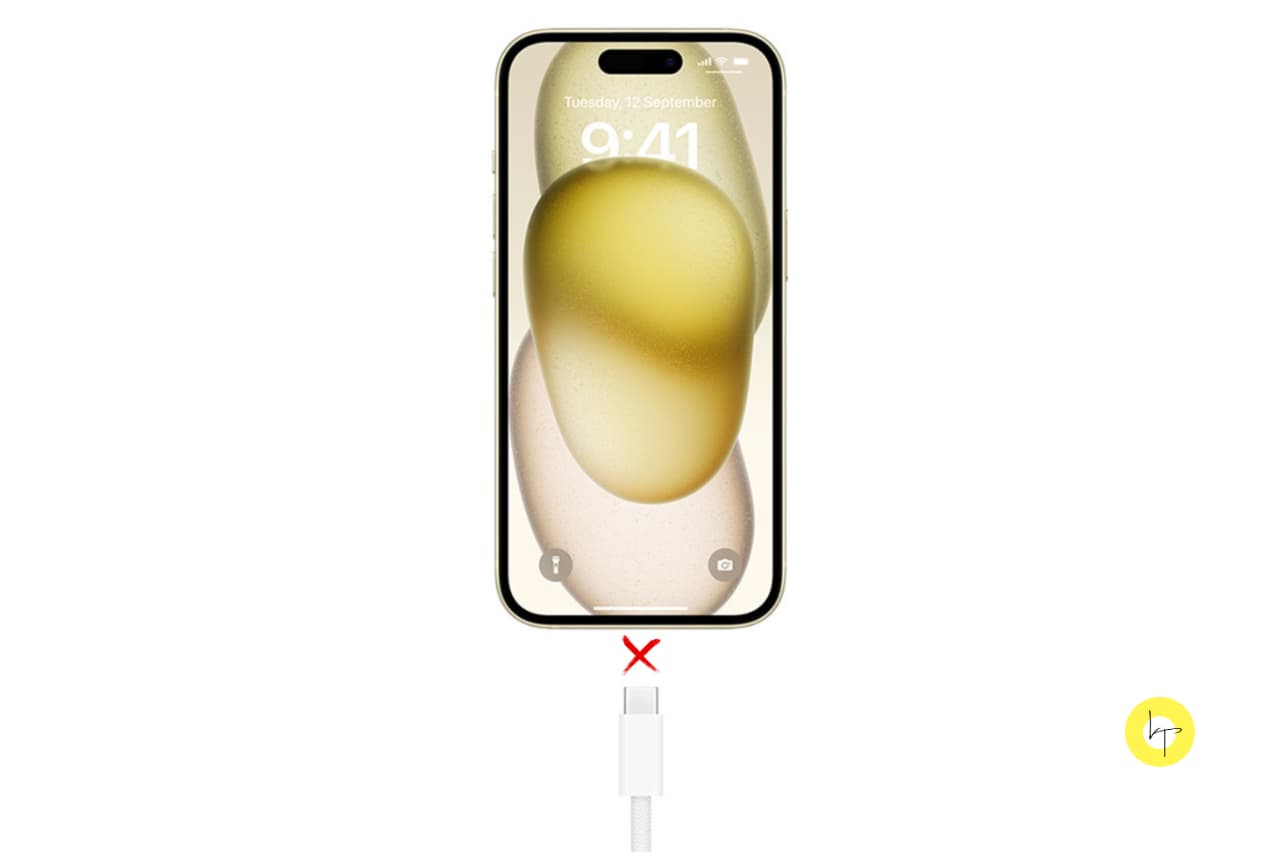Is the Lightning or USB-C port at the bottom of your iPhone not working and thus not charging your phone with a power adapter or computer? If you’re in such an unfortunate situation, this guide will share easy and inexpensive tips to charge your iPhone using alternate means.
1. Use a MagSafe charger

iPhone 12 and later have magnets at the back, which help align the wireless charging solution properly.
If your iPhone’s charging port is not working, you can use a MagSafe charger from Apple or reputed third-party manufacturers. Amazon is full of such options, but make sure to invest in one that’s highly reviewed and well-rated.
MagSafe charging puck
Apple’s cheapest wireless charging solution at the moment is the MagSafe Charger, which can fast charge your iPhone wireless at up to 15W. But to do that, you will need a charging brick that’s 20 watts or more.
Check MagSafe charger on: Apple’s Website
MagSafe Duo Charger
Apple also makes a 2-in-1 wireless charging solution called MagSafe Duo Charger. It can charge your Apple Watch and your iPhone or your AirPods at the same time.
Unlike the MagSafe charging puck, this one is significantly expensive, but you can check it out.
Check MagSafe Duo Charger on: Amazon
Third-party MagSafe chargers
In addition to Apple, several reputed and lesser-known brands also make magnetic MagSafe chargers. You can explore Amazon to find one.
Check them on: Amazon | TwelveSouth
2. Use any Qi wireless charger

While the MagSafe charger is efficient and makes it easy to position your iPhone precisely over the charging coil, you can also use all normal Qi-certified wireless chargers (also called Universal Wireless Chargers) that you use for your Android phone. You can charge your iPhone 8, iPhone X, and all newer models, including iPhone 15, with a standard Qi-wireless charger.
Some reputed brands that make wireless chargers are:
You can also try something else that you find on Amazon or other marketplaces. But again, buy one that’s highly rated and has a return policy. You won’t want to stay stuck with a wireless charger that heats your iPhone abnormally, charges very slowly, or causes a lot of fan noise.
Note that, unlike 15-watt charging offered by reputed MagSafe chargers, most wireless chargers will slow charge your iPhone at about 7.5 watts to 10 watts.
Extra info: Qi is pronounced as chee.
3. Use Apple’s MagSafe Battery Pack that will charge both the iPhone and itself

In addition to using a MagSafe or Qi wireless charger, you can also buy a MagSafe Battery Pack that will stick to the back of your iPhone and charge it wirelessly.
You can attach the MagSafe Battery Pack to your iPhone and plug the battery pack into charging to charge it and the phone at the same time.
But note that the MagSafe Battery Pack uses a Lightning port, and thus Apple has discontinued it after switching to USB-C on iPhone 15. Hopefully, they will bring a new version with USB-C.
Until then, you can find MagSafe Battery Pack on Amazon or other retailers. You can use it to charge an iPhone 8 or later, but the experience would be optimal if you have an iPhone 12 or later.
Note: You can use a MagSafe Battery Pack with a Lightning port to charge your iPhone 15 that has a USB-C port. Just remember that you would need a Lightning cable to juice them both.
Check third-party options on: Amazon
4. Use wireless power banks
Like the MagSafe Battery Pack, you can also find power banks that have a Qi-certified wireless pad on the top, and you can place your iPhone on them to juice it up.
Check on: Amazon
5. Take simple steps to fix iPhone charging port issues
Before you go, I’d also like to share some simple tips to fix the charging port issue on your iPhone.
- Use a soft brush to clean the port. If it’s a USB-C port, take extra care as there is a small divide pin in USB-C ports, and you must not damage it.
- Clean the surface of the Lightning or USB-C port of the cable.
- Use a different cable or adapter and see if it works for you.
- Go to your nearby Apple Store or borrow one from a friend and try an authentic charger and cable with your iPhone.
Get the broken charging port fixed by Apple
The most important use for the Lightning or USB-C port on your iPhone is to charge the device. And while you can use one of the above methods to do that, a broken port means you cannot use your iPhone for wired CarPlay or sync with Finder on Mac and iTunes on Windows PC.
So, it would be best if you try getting your iPhone’s port fixed at an Apple Store or authorized service center.
If the repair is very expensive, I won’t go ahead with it on an old iPhone. But for a new model like iPhone 14 or 15, it would be better to get it repaired.
Read Next: How to use NFC on iPhone and what to do if NFC is missing!

We help you with your iPhone, iPad, Mac, AirPods, Apple Watch, Apple TV, HomePod, iOS and macOS apps, and other Apple software and services.
